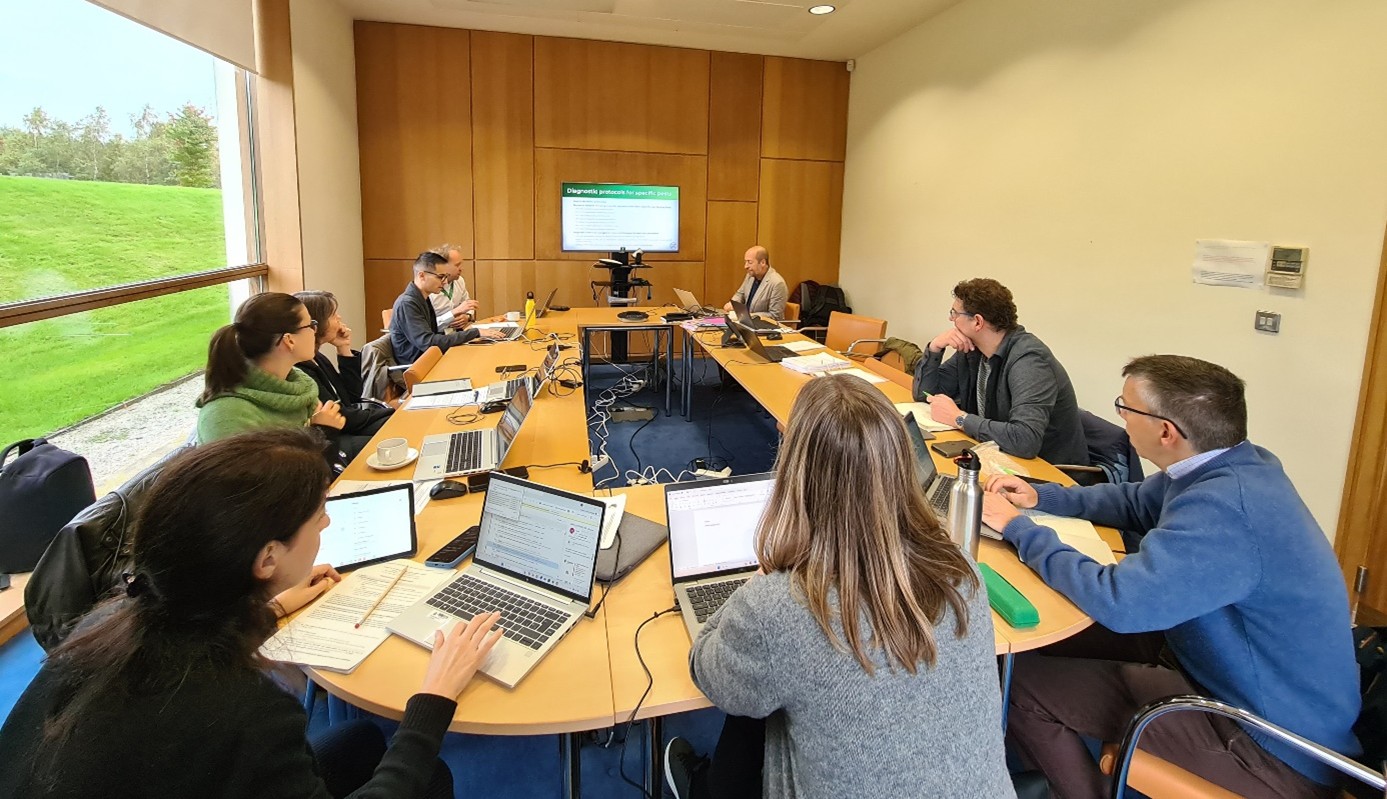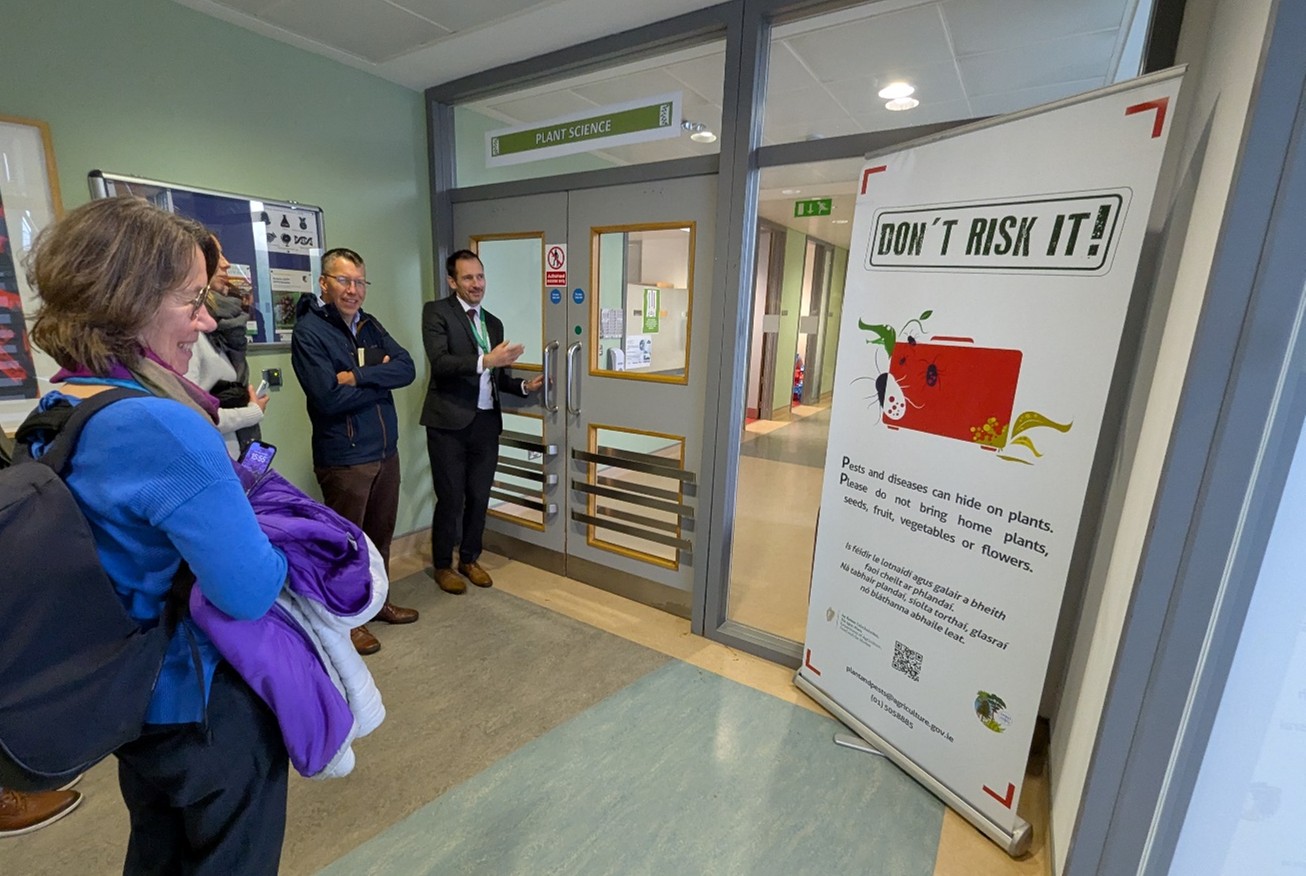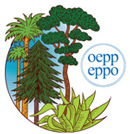
74th meeting of the Panel on Phytosanitary Measures
Celbridge, Co. Kildare (IE), 2025-10-7/9
The Panel met on 2025-10-7/9 at the Department of Agriculture, Food and the Marine (DAFM), in Celbridge, Co. Kildare (Ireland). It was attended by 8 participants from 7 different EPPO countries and from the European Commission, as well as by the EPPO Secretariat (chaired by Mr Picard, and attended by Mr Musolin). The main task of this Panel is to evaluate risks presented by specific pests and design phytosanitary measures to avoid their introduction and spread (see the composition and terms of reference of the Panel). On the 8th of October, a technical visit of the central laboratory Backweston complex, including the seed testing and plant health laboratories, was organized.

Photo of the Panel on Phytosanitary Measures (2025-10-7/9)
EPPO Lists of pests recommended for regulation
Recommendations for regulation by EPPO are made either based on EPPO pest risk analyses (PRAs) prepared by Expert Working Groups (EWG), or on PRA reports based on national/EU PRAs. The Panel reviewed the following documents:
- Potexvirus citriflavivenae (Citrus yellow vein clearing virus, CYVCV) – draft EPPO PRA
- Litylenchus crenatae (beech leaf disease) – PRA report based on a draft PRA for the United Kingdom and an Irish PRA
- Harringtonia lauricola (laurel wilt) and its vector Xyleborus glabratus – draft PRA report based on the EPPO Study on bark & ambrosia beetles of non-coniferous wood and additional publications
The Panel recommended to the Working Party on Phytosanitary Regulations the addition of these pests to the EPPO A1 List. Additional information is being collected on beech leaf disease and laurel wilt to finalize the PRA reports. Other PRA reports were discussed and will be reviewed at the next Panel.
- Pseudips mexicanus (Coleoptera: Scolytinae) – draft EPPO PRA. The Panel did not recommend adding this pest to EPPO A1/A2 Lists, considering that this is a secondary pest not likely to cause economic losses in the EPPO region.
- Strawberry latent C virus – draft EPPO PRA. This PRA was prepared as a pilot to test the procedure for delisting agreed with the Working Party on Phytosanitary Regulations, to discuss the format as well as to discuss the level of information needed. The Panel recommended that based on this PRA, the pest is removed from EPPO A1 List. As agreed in the procedure for delisting, the next step should consist of an EPPO Member Countries consultation.
Recent information received on incursions of EPPO A1 pests in the EPPO region was shared with the Panel.
Following new information received on the situation of Stenocarpella macrospora (dry rot of maize), the pest is now considered eradicated from the EPPO region. The Panel recommended moving it from the EPPO A2 to the EPPO A1 List.
Following changes in taxonomy, the Panel recommended that the listing of Ophiostoma wageneri in EPPO A1 List is replaced by the three species Leptographium wageneri, L. ponderosum comb. nov. and L. pseudotsugae comb. nov. New information from the literature will be monitored to consider if a separate assessment of these species can be done in the future.

Technical visit of the Panel at the central laboratory Backweston complex (2025-10-08)
Pest Risk Analysis
The Panel reviewed the risk assessment on Blunervirus solani (tomato fruit blotch virus, ToFBV) published by ANSES (FR). Considering the limited information available on this recently described virus and the rapid nature of the analysis, the Panel did not recommend using this risk assessment as a basis for listing ToFBV in the EPPO A2 List.
The Panel was updated on the organization of a webinar on mapping and modelling to support EPPO PRA activities planned for 2026-01, as well as a training workshop on PRA scheduled for 2026-11 in Serbia. The Panel discussed activities for a possible workshop on grapevine pests with the International Organization on vine and wine (OIV) in 2027, and was updated on the preparation of an article on research needs identified in EPPO PRAs.
The Panel was updated on the RNQP Project part 2, a 2-year project financed by the European Commission, to assess the potential RNQP status of the pests listed in the EU Fruit Marketing Directives, as well as some additional pests for other sectors. The Project is ending in 2025-11.
The Panel was also given presentations on the new EFSA mandates, to foster effective collaboration and ensure complementarity between EFSA and EPPO. This included a mandate on assessing effectiveness of EU measures for Bursaphelenchus xylophilus (pine wood nematode) as well as a mandate on assessing freedom from Agrilus anxius of Betula wood from Canada. Another presentation was given on the EFSA priority pest Project for which outcomes will be used for the revision of EU priority pest Lists.
Information
The Panel discussed a draft specification for updating and developing the pathway tool in EPPO GD, a work plan for developing its new structure and the new categories of pathways to be used. This tool was considered by the Working Party on Phytosanitary Regulations and the present Panel to be of particular interest for risk assessors and inspectors at points of entry.
New EPPO Strategic Framework 2026-2030
The Panel was presented the new EPPO Strategic Framework 2026-2030 approved by EPPO Council (2025-09). New key activities for the Panel were presented, such as development of an RNQP List, training to facilitate uptake of EPPO’s Panels’ work, and exploring/implementing a subregional approach. The Panel brainstormed on possible activities for inclusion in the implementation plan and yearly work programmes to ensure effective execution of this new framework.
The next Panel meeting is planned for 2026-03-24/26 in Paris.
